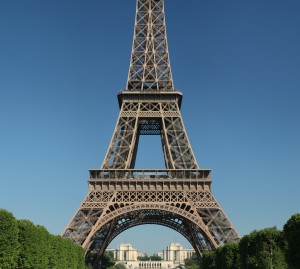 The Eiffel Tower is an iron lattice tower located on the Champ de Mars in Paris. The tower was named after the engineer Gustave Eiffel, whose company designed and built the tower. Built in 1889 as the entrance arch to the 1889 World’s Fair, it was initially criticized by some of France’s leading artists and intellectuals for its design, but has become both a global icon of France and one of the most recognizable structures in the world.
The Eiffel Tower is an iron lattice tower located on the Champ de Mars in Paris. The tower was named after the engineer Gustave Eiffel, whose company designed and built the tower. Built in 1889 as the entrance arch to the 1889 World’s Fair, it was initially criticized by some of France’s leading artists and intellectuals for its design, but has become both a global icon of France and one of the most recognizable structures in the world.
The tower is the tallest structure in Paris. The tower is 324 meters tall, about the same height as an 81 story building. The material used for the design of the tower included a puddle iron structure that weighs 7,300 tons, while the entire structure, including non-metal components is approximately 10,000 tons. One of the considerations when Eiffel began to plan out the design of the structure was wind. Eiffel and his engineers, as experienced bridge builders, understood the importance of wind forces and knew that if they were going to build the tallest structure in the world they had to be certain it would withstand them. Eiffel used empirical and graphical methods accounting for the effects of wind rather than a specific mathematical formula.
The Eiffel tower also was built to accommodate tourists and others in the area. When built, the first level contained three restaurants and an Anglo-American bar which was later converted to a 250 seat theatre. On the third level there were laboratories for various experiments and a small apartment served for Gustave Eiffel to entertain guests. This apartment is now open to the public, complete with period decorations and lifelike models of Gustave and some guests. Being a very tall and well known landmark the maintenance was a large part of the design. Maintence of the tower includes applying 50 to 60 tons of paint every seven years to protect it from rust. An interesting fact is that the height of the Eiffel Tower varies by 15 cm due to temperature. More than 250 million people have visited the tower since its construction in 1889. The Eiffel Tower is the most-visited paid monument in the world and that is why it is incldued as an amazing wonder in our world.
http://en.wikipedia.org/wiki/Eiffel_Tower
http://www.engineering.com/Library/ArticlesPage/tabid/85/ArticleID/62/Eiffel-Tower.aspx
http://www.livescience.com/29391-eiffel-tower.html

